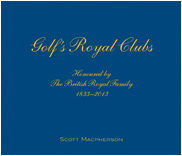GOLF CHAMPIONSHIPS ON SMGD COURSES:
At Close House – Colt Course. Sept 2017. A prestigious European Tour Championship hosted by Lee Westwood.
Broadcast worldwide from Royal Wellington Golf Club, NZ. October 2017. WOW!
The legacy continues.
Co-hosted at the award-winning Millbrook Resort near Queenstown, NZ. 2014 – 2023.
Get ON the Grass
Turf grass, it’s more than just grass; the modern turf grass is the result of years of research, selection, breeding and lots of physical and financial investment. Often working behind the scenes, the turf industry is fascinating, misunderstood and yet tireless in its pursuit of breeding better grasses for the enjoyment of golfers. Is your course capitalising on their achievements?
After having been trialled at different sites around the world, thousands of tonnes of seed are produced each year by five main worldwide breeding stations. New cultivars are tested for characteristics such as growth density, blade fineness, resistance to disease, colour (in summer and winter) wear, ability to mow closely and general appearance in different climate and in different soil types. All species are tested; Perennial ryegrass, Red fescue, Tall fescue, slender creeping and chewing’s fescue, Bermuda, bent grass and many, many others. However, only the best of each cultivar is chosen to be cloned and breed for production. Ultimately the one cultivar finally chosen to go into production may come from a breeding pool as large as 53,000 plants over a 10 year period! The research and breeding costs for that one new cultivar prior to production is often over a million of dollars.
The process is fascinating. At the Limagrain trial plots in the Loire Valley in France, the main breeding site for Western Europe, I was privileged to see the breeding methods and how individual plants of selected cultivars were planted between tall ryegrass and allowed to cross pollinate naturally. The ryegrass acted as a screen to block outside pollen from contaminating the pollination process. The importance of the ryegrass shield is related to uniformity. E.g. in golf we demand that one grass plant of a certain cultivar be identical to the next. Everything the similar so that the greens look, play and are maintainable in the same, if not identical manner. Additionally we would like the grass to grow at a consistent speed all year round, and idealistically be quick to germinate yet produce less clippings. In 2001 at a golf resort in St Andrews, we became the first user of a new fine bladed dwarf ryegrass called ‘Elan’. One of its characteristics is its extremely low crown height. Where old ryegrass cultivars could be cut no longer than 40mm, this new ‘Elan’ cultivar could be mown at a height of just 5mm! It’s all in the breeding.
Turf breeding is very scientific, and continues to develop at great strides year on year. Gene mapping has been used to identify resistances to diseases and breeding for genetic preference has been occurring since the first turf naturally mutated. Some of the latest research is in turf root development. Developing turfs with more aggressive rooting habits will help colour, vigour, wear and resistance to turf disease as more aggressive roots will suffer less dieback during the winter period. This will also help tremendously when trying to establish newly laid turf sod as aggressive roots will break through the interface and have a greater chance of binding with the new soil.
New advances are important. Developing grasses that require less water or nutrients or can be irrigated with reclaimed water is good for our environment. Developing grasses that are shade tolerant and capable of growing under trees helps soil development and breeding hard wearing grasses capable of sustaining heavy use are in high demand by those trying to maintain grass in public places. These are social, environmental and aesthetic benefits directly resulting from turf research and development.
Golf is a great benefactor of these turf developments. Now there are fine turf cultivars for golf courses capable of being grown in all climates, in all environments, at all altitudes all over the world. With appropriate turf selection and management, all areas of your golf course can be covered in healthy turf grass. Embrace the technology, and get back on the grass quicker than ever before!
AWARDS
 Winner
Winner
Excellence in Compliance Award
Royal Wellington Golf Club
PUBLICATIONS
 St Andrews
St Andrews
The Evolution of the Old Course
by Scott Macpherson
TESTIMONIALS
"The course looks absolutely stunning and every single golfer, without exception, has said how wonderful it is and that the views are exceptional. Most of that is down to Scott's own design, imagination and flair and I am very grateful for all the effort he put into making the course so special."
Graham Wylie, Owner of Close House Hotel and Golf. England, UK



